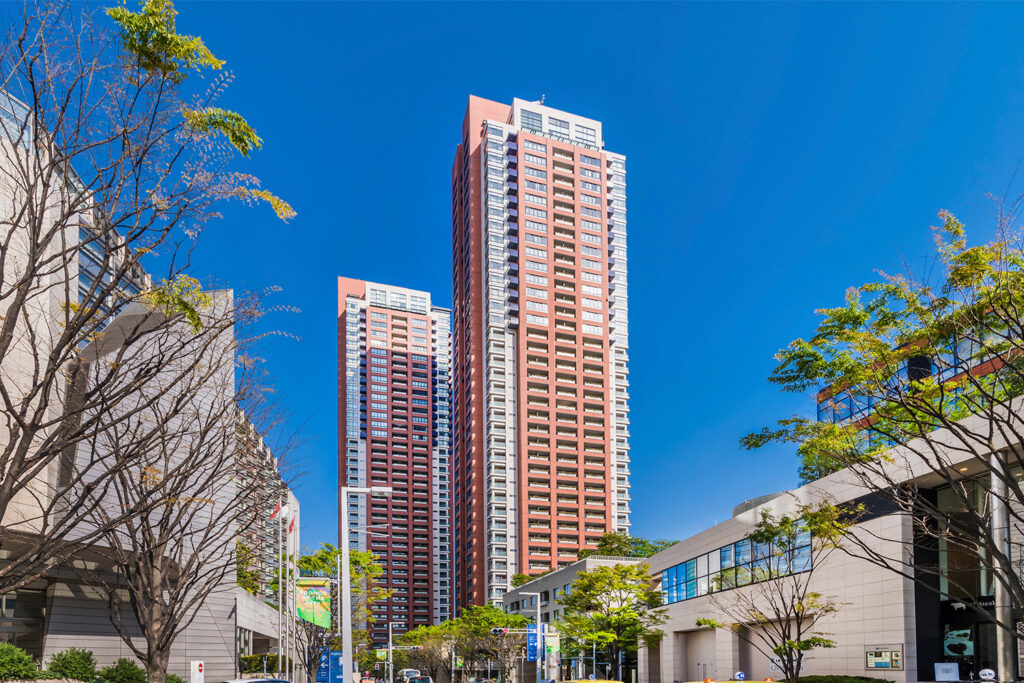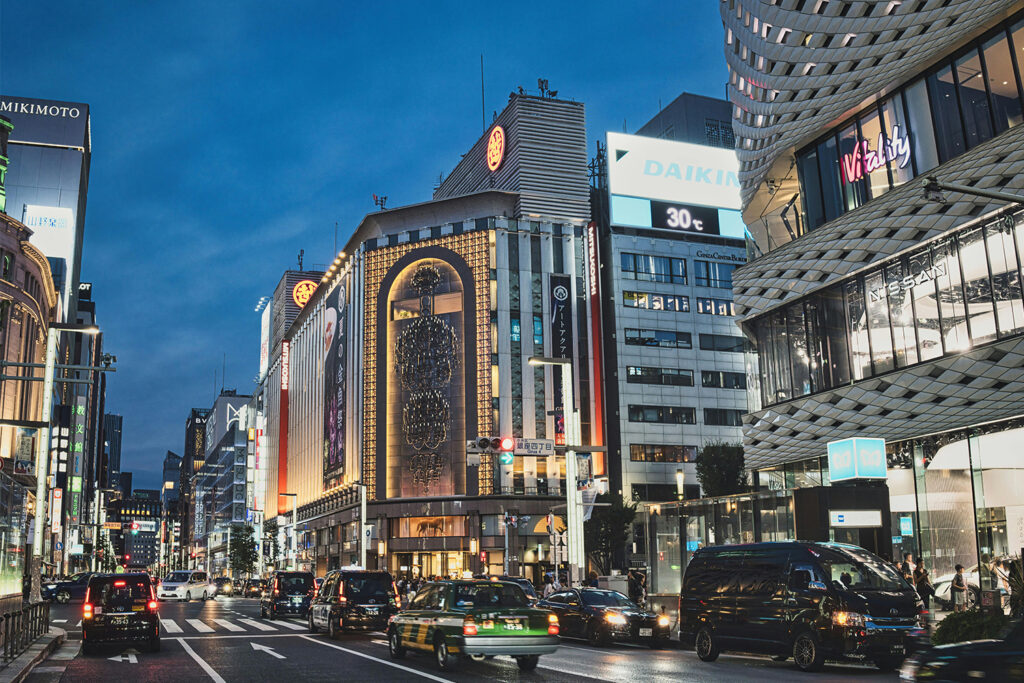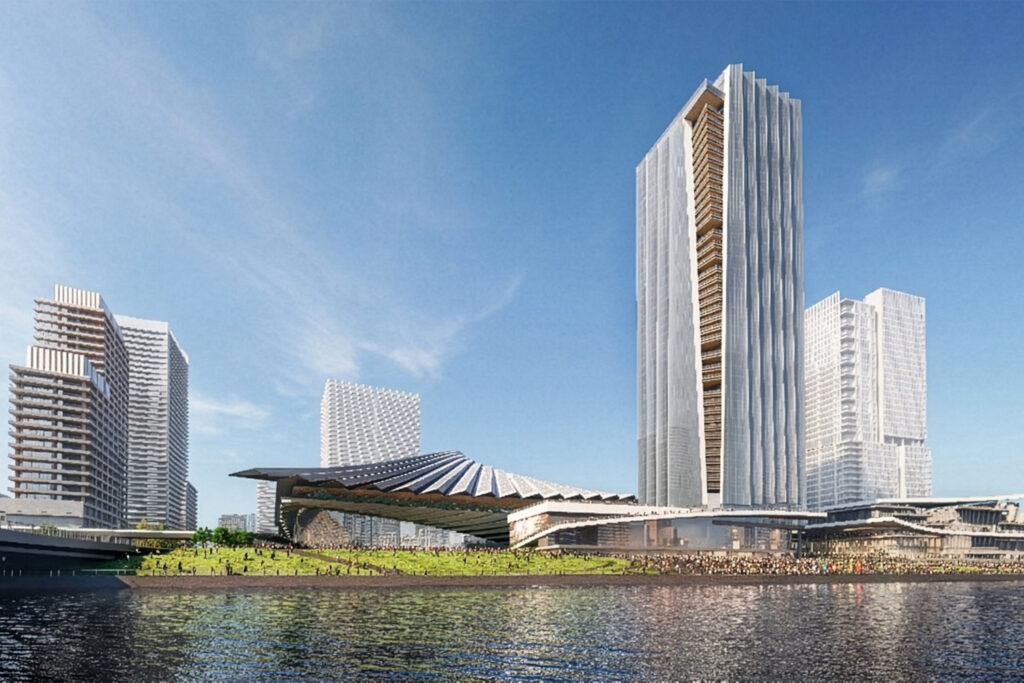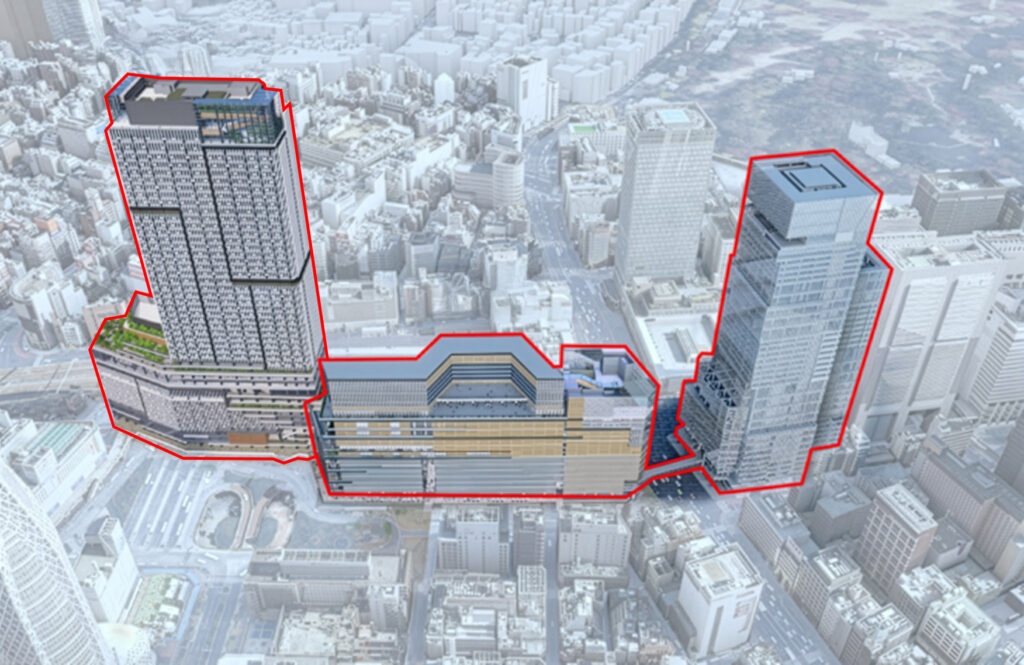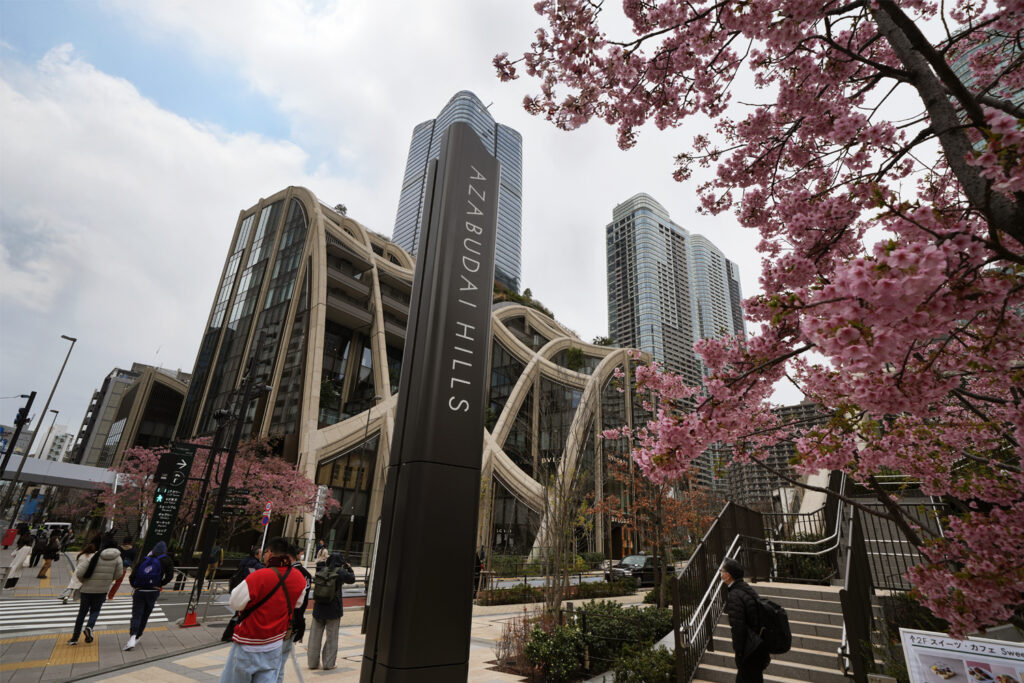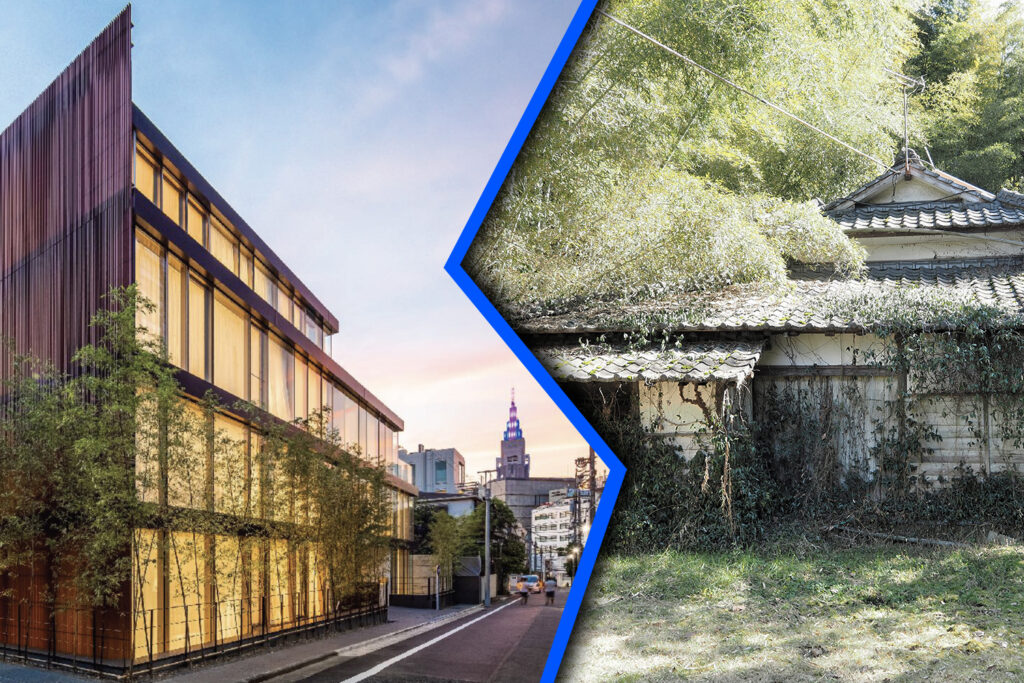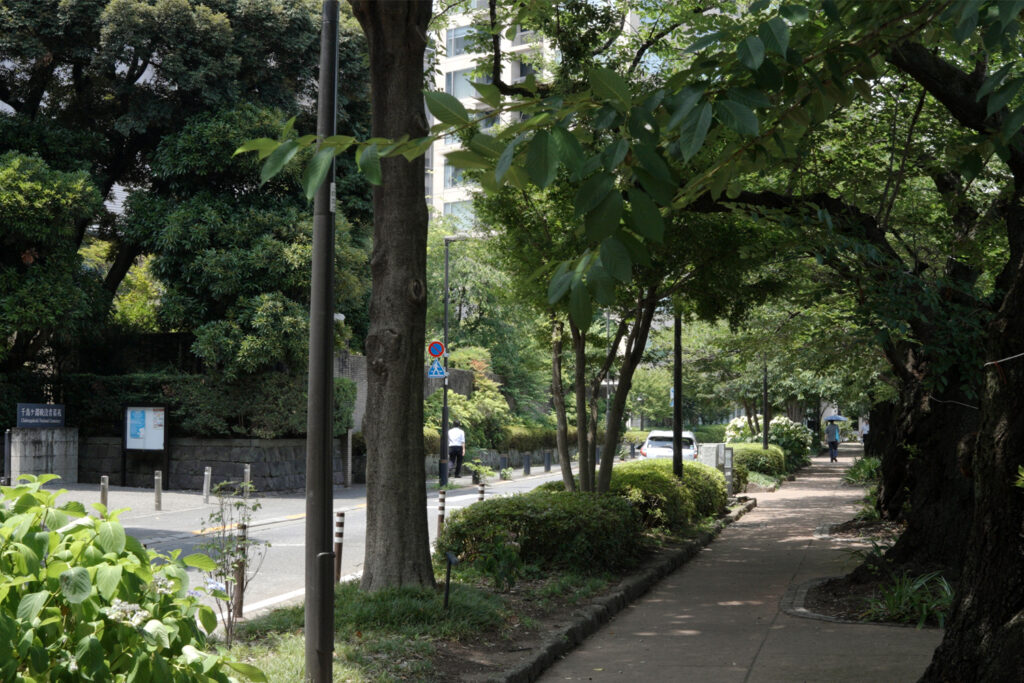
In busy Tokyo, few neighborhoods have the history and status of Sanbancho (三番町). This quiet area in Chiyoda Ward sits right next to the Imperial Palace, where old traditions meet modern luxury living. For people looking for a home that connects them to centuries of Japanese history while offering today’s comfort, Sanbancho is truly special.
Where History Meets Modern Tokyo
Sanbancho sits in one of the most important locations in Tokyo. Right next to the Imperial Palace, this area has been at the center of Japanese power for over 400 years. The name tells a story, “Sanbancho” means “third district,” going back to when the Tokugawa shogunate organized the city into numbered areas during the Edo period. As of 2020, this upscale residential district has a population of a little over 3,500 people in around 1,700 households, maintaining its exclusive character while adapting to modern urban life.
Walking through Sanbancho today means following the same paths once used by samurai who served the shogun. The tree-lined streets that now have diplomatic homes and luxury houses were once home to hatamoto, the shogun’s direct retainers. The word hatamoto means “base of the flag,” referring to those who protected the shogun’s standard and had the rare privilege of meeting Japan’s most powerful leader directly.
A Legacy of Exclusivity and Power
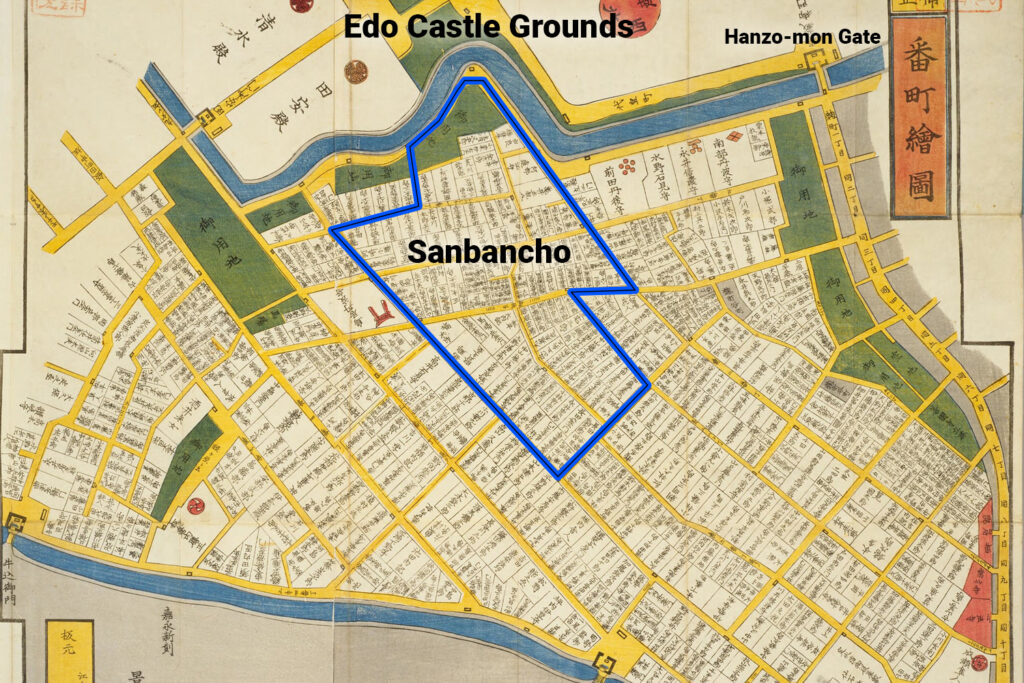
This is a historical woodblock-printed map from the late Edo period (estimated to be from around 1840-1867) showing the Banchō districts of central Edo, with Sanbancho clearly outlined in blue and positioned directly adjacent to the Edo Castle grounds (Now the Imperial Palace) and Hanzōmon Gate. The map illustrates the systematic urban planning of the Tokugawa shogunate, displaying the numbered residential quarters where elite hatamoto samurai lived, with each district’s boundaries and the strategic positioning near Edo Castle that made these areas so prestigious and important to Japan’s ruling class.
Sanbancho’s story begins in 1603 when the Tokugawa shogunate made Edo Castle their power base. The six Bancho districts, including Sanbancho, were created specifically for the Ōban groups—elite hatamoto samurai who protected the castle and shogun. This wasn’t just any residential area; it was home to Japan’s most trusted warriors and administrators.
These bannermen were the top level of samurai society. Unlike regular samurai who served local lords, the hatamoto served the shogun directly and had privileges few could imagine. Their homes in Sanbancho showed their status, with large estates and carefully maintained gardens that displayed both their wealth and their closeness to ultimate power.
The area became even more exclusive during the Edo period’s strict social system. Only those with direct connections to the shogunate could live here, making Sanbancho one of the most exclusive addresses in Japan. This tradition of prestige has continued unbroken for over four centuries.
The dramatic changes during the Meiji Restoration in 1868 transformed Sanbancho again. When the feudal system ended and the samurai class was abolished, the government took over many of these prime estates. But rather than reducing the area’s status, this change only made it more important. The new Meiji government, recognizing the strategic value of this location, carefully gave the land to wealthy merchants, government officials, and eventually foreign diplomats.
The Boshin War of 1868-1869 marked the end of samurai rule. Around 69,000 men fought in this civil war between the Tokugawa shogunate and forces supporting the Imperial Court. About 8,200 were killed. The victorious Imperial faction abandoned plans to expel foreigners from Japan and instead adopted policies of continued modernization. In 1871, the government abolished the feudal system, restructuring the country into prefectures. This ended the samurai class, including hatamoto, leaving many financially ruined when their stipends were eliminated. The government took samurai estates, including many homes in Bancho, and used them for government purposes, education, or sold them to wealthy merchants and new elites.
Educational Excellence and Cultural Growth
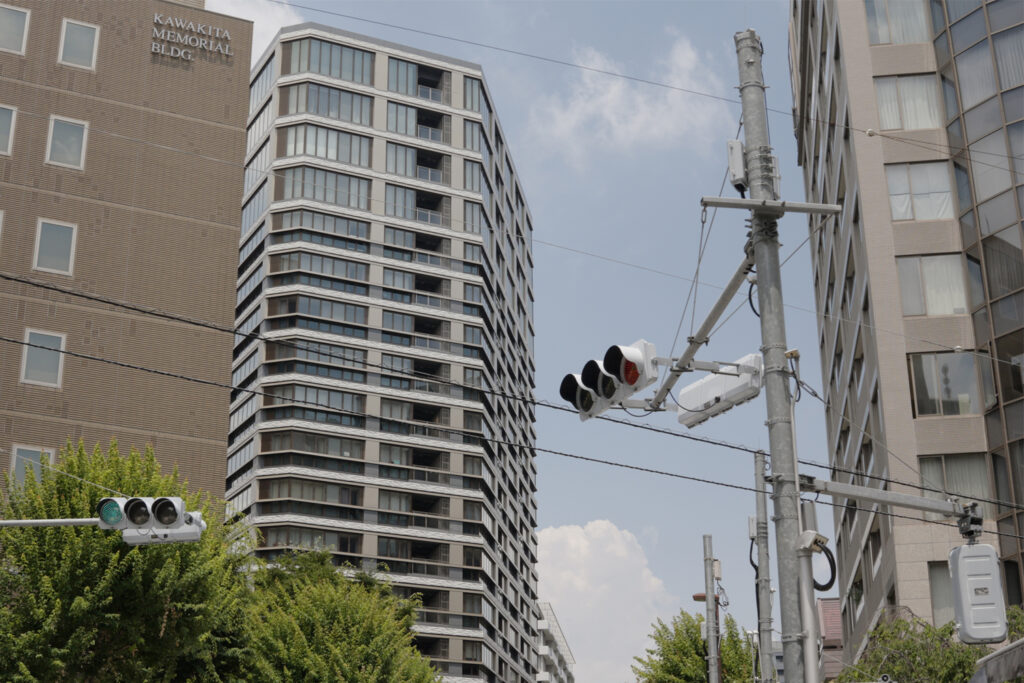
Modern Sanbancho is known for educational excellence, attracting families who value both academic achievement and cultural growth. Otsuma Women’s University, founded in 1949, is located in Sanbancho near the Imperial Palace, while Hosei University, a top research institution and member of the prestigious MARCH group of private universities, relocated to its current campus in nearby Fujimi-cho in 1921. These respected institutions have created a neighborhood atmosphere that values learning and intellectual development.
These universities aren’t just schools; they’re cultural anchors that have shaped the area’s character for generations. Students and faculty from around the world add to Sanbancho’s international flavor, while the academic environment means residents are surrounded by people who value education and cultural growth.
For families considering Sanbancho as their home, this educational ecosystem offers real advantages. Children grow up where learning is celebrated, and being close to world-class institutions provides opportunities that go far beyond traditional schooling. The slope called Onmayadanisaka got its name from the stables (umaya) that were once at the bottom of the slope.
Today, skyscrapers are built over former HModern Sanbancho is known for educational excellence, attracting families who value both academic achievement and cultural growth. Otsuma Women’s University, founded in 1949, is located in Sanbancho near the Imperial Palace, while Hosei University, a top research university and member of the prestigious MARCH group of private universities, relocated to its current campus in nearby Fujimi-cho in 1921. These respected institutions have created a neighborhood atmosphere that values learning and intellectual development.
These universities aren’t just schools; they’re cultural anchors that have shaped the area’s character for generations. Students and faculty from around the world add to Sanbancho’s international flavor, while the academic environment means residents are surrounded by people who value education and cultural growth.
For families considering Sanbancho as their home, this educational ecosystem offers real advantages. Children grow up where learning is celebrated, and being close to world-class institutions provides opportunities that go far beyond traditional schooling. The slope called Onmayadanisaka got its name from the stables (umaya) that were once at the bottom of the slope. Today, skyscrapers are built over former hatamoto residences, and while the old stables are gone, the universities remain, continuing the area’s tradition of importance and excellence. residences, and while the old stables are gone, the universities remain, continuing the area’s tradition of importance and excellence.
Neighborhood Character and Daily Life
What makes Sanbancho truly special is how it balances its important history with the pleasures of modern urban living. The neighborhood feels residential and calm despite being in the heart of one of the world’s largest cities.
The streets have elegant high-end homes ranging a few exlusive Family houses to modern apartments. Many of these properties feature architectural details and craftsmanship that reflect the area’s status as home to Tokyo’s elite. Walking through the neighborhood, you’ll notice how the buildings respect both the historic character of the area and the modern needs of today’s residents.
The neighborhood has cozy cafes with lots of character that serve everything from perfect morning coffee to light meals and quality drinks. These cafes are where neighbors meet, business deals are discussed over carefully prepared drinks, and the pace of life slows down just enough to appreciate the finer things.
The dining scene reflects the sophisticated tastes of residents. You’ll find a good number of international restaurants including French and Italian establishments alongside traditional Japanese places. The variety of restaurants brings diverse flavors to this historic setting, creating dining experiences that cater to the cosmopolitan nature of the neighborhood.
Natural Beauty and Cultural Treasures

Perhaps nowhere is Sanbancho’s appeal more evident than during cherry blossom season. The nearby Chidorigafuchi Park and Chidorigafuchi Greenway offer some of Tokyo’s most spectacular sakura viewing. This 700-meter walkway along the Imperial Palace moat is lined with approximately 260 cherry trees, creating a tunnel-like effect during spring blooms. When the trees bloom each spring, the entire area transforms into a pink and white wonderland that attracts over one million visitors during the Chiyoda Sakura Festival.
But Chidorigafuchi offers more than just seasonal beauty. The park and green way provide year-round recreation and relaxation for residents. Morning jogs along the tree-lined paths, afternoon picnics by the water, and evening walks as the city lights begin to twinkle create a lifestyle that many urban dwellers can only dream of. During cherry blossom season, the trees are illuminated from sunset to 10 PM, creating a magical nighttime atmosphere that contrasts beautifully with the area’s history. Visitors can even rent boats to view the blossoms from the water, making this one of Tokyo’s most romantic cherry blossom experiences.
The presence of Yasukuni Shrine adds another layer of cultural importance to the area. This historically significant shrine serves as a reminder of Japan’s complex past while providing a space for quiet reflection. The shrine has about 500 cherry trees and seasonal food stalls during spring, adding to the area’s appeal. Whether you visit for historical interest or spiritual reasons, the shrine contributes to the unique character that makes Sanbancho unlike anywhere else in Tokyo.
For those interested in Japanese culture and arts, the nearby Nippon Budokan offers world-class performances and events throughout the year. From traditional martial arts demonstrations to international concerts, the Budokan means residents have access to cultural experiences that span both Japanese traditions and global arts. The Science and Technology Museum is also nearby, adding educational and cultural opportunities.
International Connections and Diplomatic Prestige
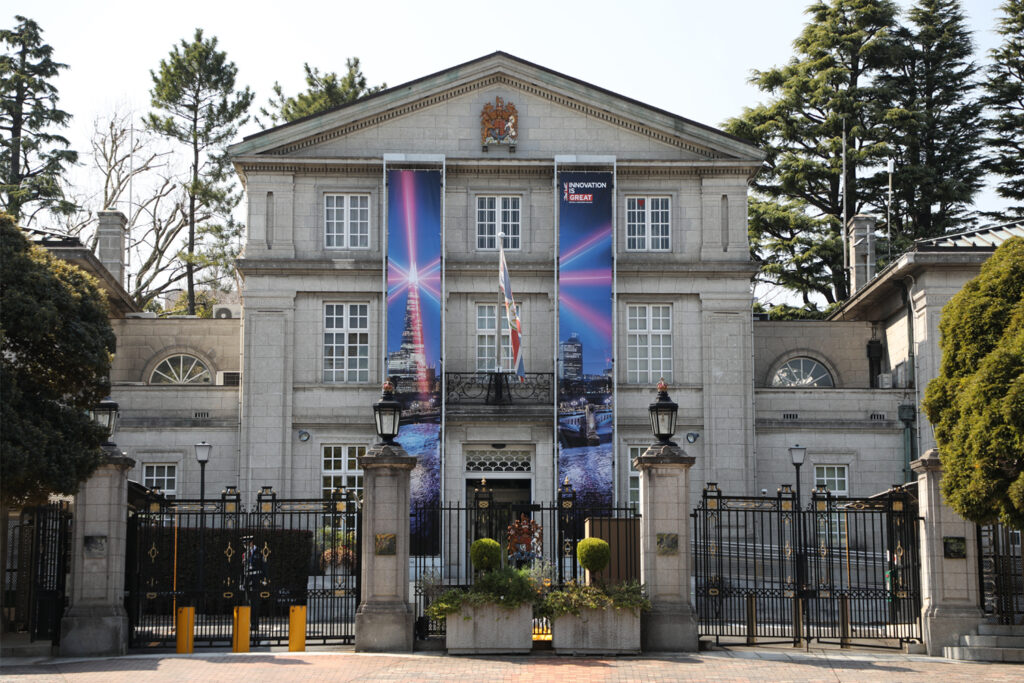
The British Embassy’s presence in neighboring Ichiban-cho adds an international dimension to the area that has been part of its character since the 1870s. When British diplomat Harry Parkes chose this location for the permanent legation in 1872, he recognized what the Japanese had known for centuries, this area’s closeness to power and its natural prestige made it the perfect location for important diplomatic activities.
Today, the embassy and other diplomatic missions in the area add to Sanbancho’s cosmopolitan atmosphere. International residents, diplomatic families, and global business leaders call this neighborhood home, creating a community that is both deeply Japanese and genuinely international.
This diplomatic presence also means the area benefits from enhanced security and infrastructure that serves both Japanese residents and the international community. The result is a neighborhood that feels safe, well-maintained, and connected to the wider world.
Perfect Connections to All of Tokyo
Despite its tranquil, almost secluded feel, Sanbancho offers excellent connectivity to the rest of Tokyo. Ichigaya Station, just a short walk away, serves four major lines: the Chuo-Sobu overground line, Namboku Line, Shinjuku Line, and Yurakucho Line. This means whether you’re heading to business meetings in Marunouchi, shopping in Shibuya, or catching a flight from Haneda Airport, you can reach your destination quickly and comfortably.
The nearby Kojimachi and Hanzomon stations provide additional options, so residents are never far from Tokyo’s comprehensive rail network. This connectivity is particularly valuable for business professionals who need to travel frequently around the city, as well as families who want to take advantage of Tokyo’s countless cultural and recreational opportunities.
The central location also means many of Tokyo’s most popular destinations are within walking distance or just a short taxi ride away. The Imperial Palace East Gardens, Tokyo Station, and the upscale shopping districts of Ginza and Nihonbashi are all easily accessible, making Sanbancho an ideal base for exploring everything the capital has to offer. Most popular Tokyo locations are just 25 minutes away.
The Future of Luxury Living in Sanbancho (三番町)
As Tokyo continues to evolve and grow, Sanbancho remains constant, a neighborhood that has successfully preserved its character while adapting to modern needs. The area continues to attract discerning residents who appreciate the rare combination of historical significance, natural beauty, cultural richness, and practical convenience that defines life here.
For those considering making Sanbancho their home, the neighborhood offers something increasingly rare in modern Tokyo: a sense of place that connects residents to centuries of Japanese history while providing all the amenities and conveniences of contemporary urban living. Whether you’re drawn by the area’s prestigious reputation, its educational opportunities, its natural beauty, or simply its unique atmosphere, Sanbancho represents one of Tokyo’s most desirable residential addresses.
Housing Japan is developing a new luxury residence in this historic neighborhood. This carefully designed family home will span four floors plus a basement, with an open garage, created specifically for those who appreciate both Sanbancho’s rich heritage and the finest in modern residential design. Due for completion in February 2026, this property will embody everything that makes Sanbancho special, combining respect for the area’s historic character with the luxury and convenience that today’s residents expect.
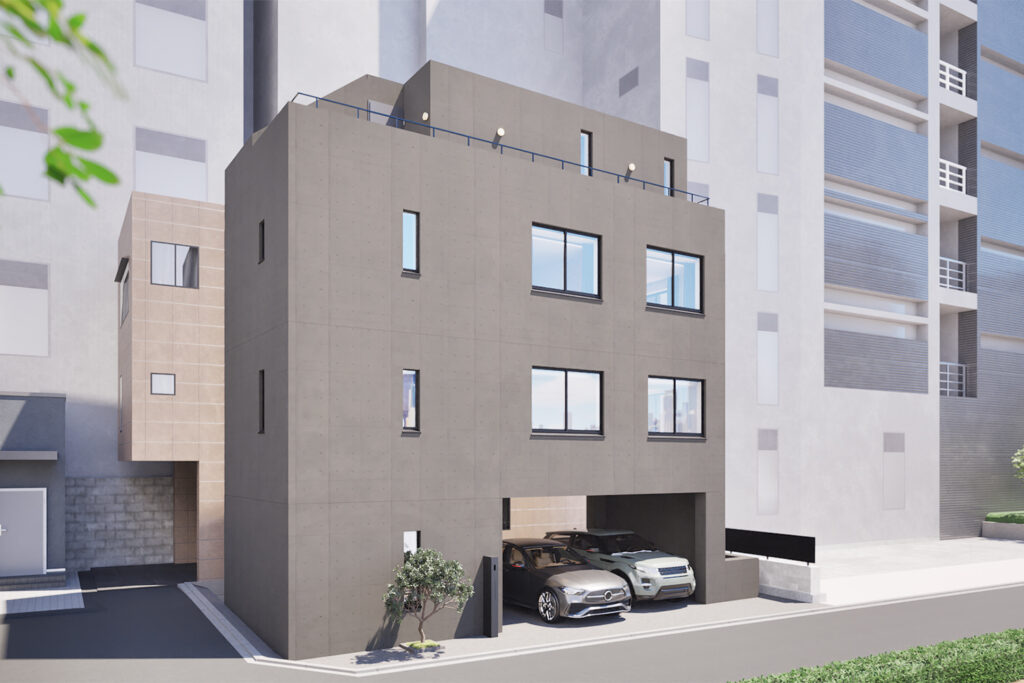
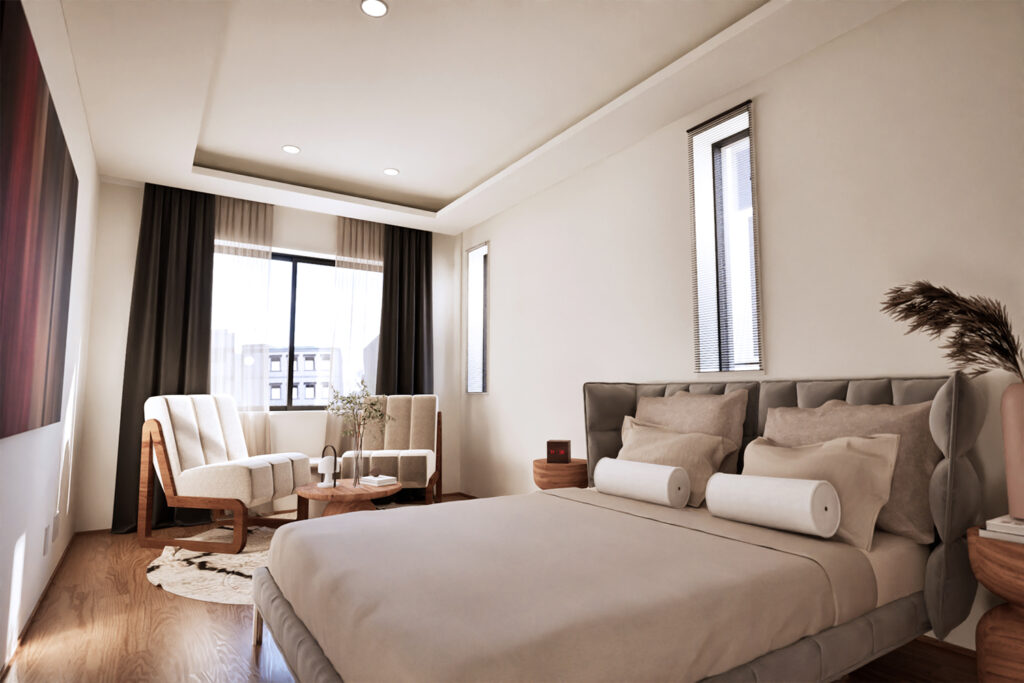
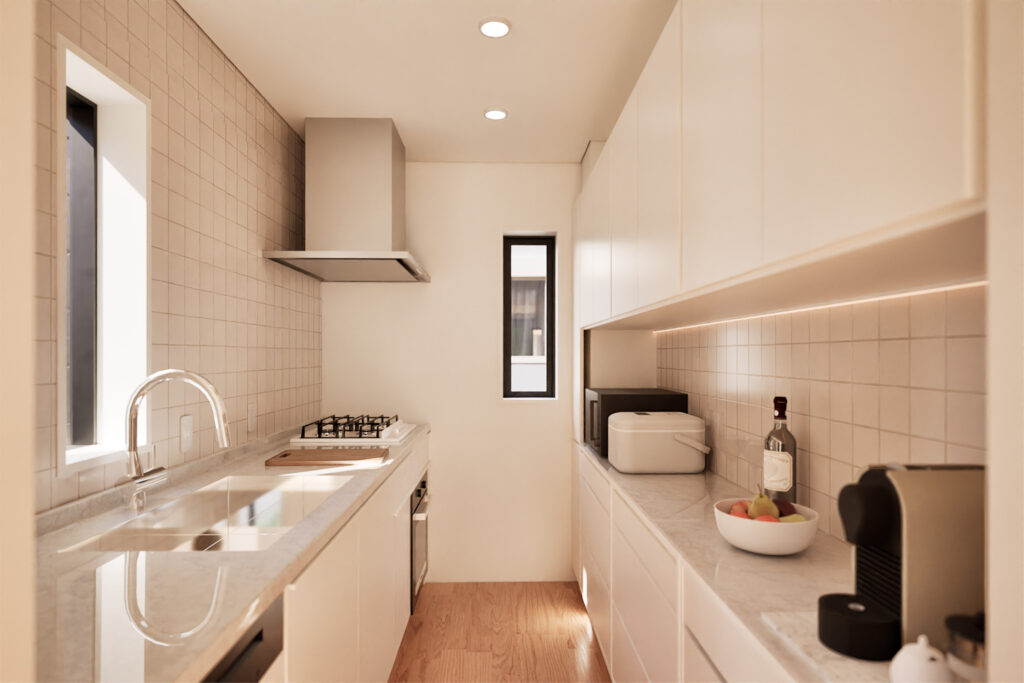
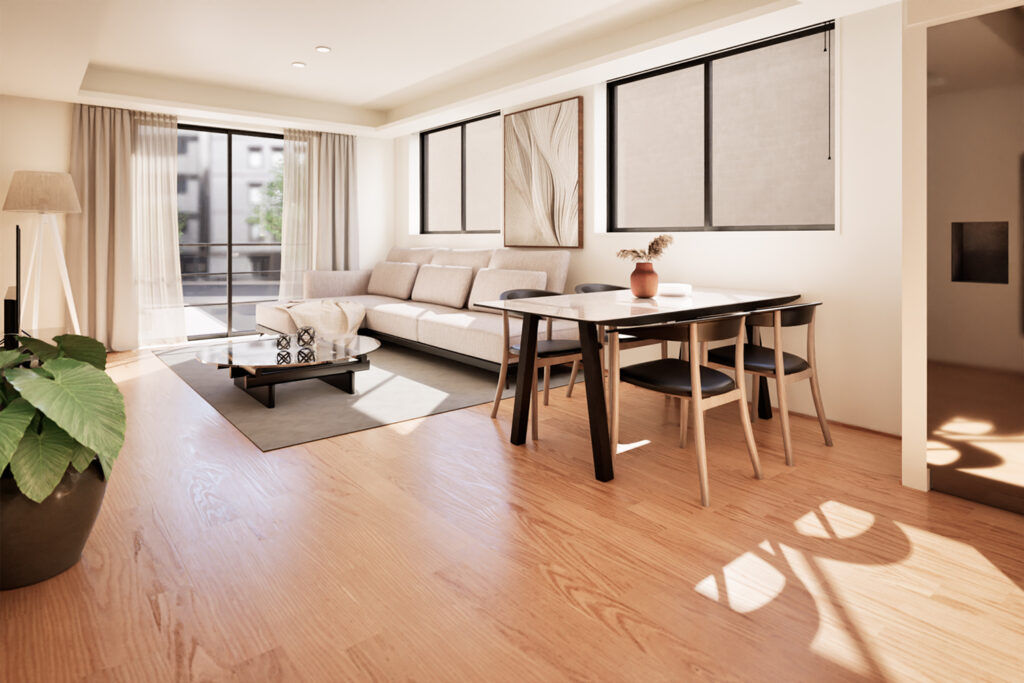
These are CGI render of the Sanbancho House that is being developed by Housing Japan. The Final design, interior and finishes may vary when it is completed. These Renders are made In House by our 3D team.
Living Where History Was Made
For families, professionals, and anyone who values the finer things in life, Sanbancho represents more than just a place to live. It’s a chance to become part of a story that began centuries ago and continues to unfold today. In a world where authentic experiences are increasingly rare, Sanbancho offers the real thing, a chance to live at the very heart of Japan’s remarkable journey from feudal society to modern global power.
Why Choose Housing Japan for Your Sanbancho Property
For those considering Sanbancho as their home or investment destination, Housing Japan specializes in luxury residential properties in central Tokyo, with deep expertise in prestigious areas like Sanbancho and the broader Bancho district. Whether you’re looking for a family home that connects you to Tokyo’s rich history or seeking an investment property in one of the city’s most stable and desirable neighborhoods, our team understands the unique character of Sanbancho and can help match you with properties that truly fit your lifestyle and investment goals. For international buyers, Housing Japan provides essential support with legal requirements and the practical aspects of property ownership in Japan, ensuring every detail is handled professionally from initial viewing to final closing.
Q&A: Living in Sanbancho
What makes Sanbancho special compared to other Tokyo neighborhoods? Sanbancho combines over 400 years of history as home to Japan’s elite with modern luxury living. Its location next to the Imperial Palace, world-class educational institutions, and diplomatic missions creates a unique atmosphere that’s both deeply Japanese and internationally connected.
How accessible is Sanbancho for daily commuting? Very accessible. Ichigaya Station offers four major train lines, while Kojimachi and Hanzomon stations provide additional options. Most major Tokyo destinations are reachable within 25 minutes.
What kind of dining and shopping options are available in Sanbancho? The neighborhood has sophisticated cafes, high-end restaurants, and specialty shops that reflect the refined tastes of residents. Quality bakeries and restaurants are found throughout the area. While not a major shopping district, nearby areas like Ginza and Nihonbashi are easily accessible.
Is Sanbancho suitable for families with children? Absolutely. The presence of prestigious universities creates an education-focused environment, while the parks and cultural sites provide excellent recreational opportunities. The neighborhood’s safe, quiet character makes it ideal for family life.
What’s the best time to experience Sanbancho? Cherry blossom season in spring is spectacular, but the neighborhood has charm year-round. Each season offers different experiences, from spring sakura to autumn colors in the nearby parks.
Contact Us
Housing Japan
7F BPR Place Kamiyacho, 1-11-9 Azabudai, Minato-ku, Tokyo, Japan 106-0041

